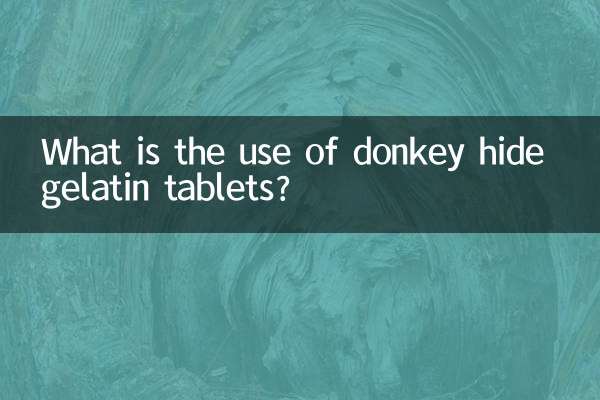Under what circumstances should you take cephalosporin? ——Analysis of hot health topics in 10 days
Recently, the discussion about the use of antibiotics has once again become a hot topic on the Internet. With the high incidence of respiratory diseases in autumn and winter, the correct use of cephalosporin antibiotics has attracted widespread attention. This article combines the hot health topics on the Internet in the past 10 days to sort out the applicable scenarios, precautions and common misunderstandings of cephalosporin for you.
1. Applicability of cephalosporin antibiotics

| Applicable diseases | Typical symptoms | Commonly used types of cephalosporins |
|---|---|---|
| bacterial upper respiratory tract infection | Suppurative tonsillitis, persistent high fever | Cefuroxime, Cefaclor |
| urinary tract infection | Frequent urination, urgent urination, and painful urination | Ceftriaxone, ceftazidime |
| Skin and soft tissue infections | Redness, swelling, heat and pain with pus | Cefazolin, Cefradine |
| Otitis media/sinusitis | Earache, pus discharge, facial tenderness | Cefprozil, cefdinir |
2. Medication precautions that have been hotly discussed recently
1.Alcohol taboos: In the past 10 days, the topic "The Dangers of Taking Cephalosporin and Drinking" has been read more than 200 million times. Experts emphasize that alcohol is strictly prohibited during medication and within 7 days of stopping medication.
2.allergic reaction: The Weibo topic #should cephalosporin skin test be done# has caused controversy. Data shows that about 5-10% of the population is at risk of allergic reactions to β-lactam antibiotics.
| Allergy symptoms | probability of occurrence | Countermeasures |
|---|---|---|
| itchy rash | 3-5% | Stop medication immediately + antihistamines |
| difficulty breathing | 0.1-0.5% | Adrenaline first aid |
| anaphylactic shock | <0.1% | emergency medical intervention |
3. Analysis of common medication misunderstandings
1.Myth: Take cephalosporins when you have a cold
Data on health short videos in the past seven days show that 38% of netizens have abused them. In fact, cephalosporins are ineffective against viral colds, and blind use may destroy intestinal flora.
2.Myth: Stop taking medication when symptoms disappear
Doctors recommend that a complete course of treatment (usually 5-7 days) be completed. Premature discontinuation of treatment may easily lead to the development of bacterial resistance.
4. Medication Guide for Special Populations
| crowd | Things to note | Recommended varieties |
|---|---|---|
| pregnant woman | Avoid use in early pregnancy | Cefazolin (category B) |
| Lactation | Stop breastfeeding for 4 hours after taking the medicine | Cephalexin |
| children | Accurately calculate dosage based on body weight | Cefaclor dry suspension |
| Abnormal liver and kidney function | Dosing interval needs to be adjusted | Ceftriaxone (less nephrotoxic) |
5. The latest expert advice (from the press conference of a top tertiary hospital within 10 days)
1. Be sure to confirm evidence of bacterial infection before taking medication (such as blood routine, C-reactive protein test)
2. The antibacterial spectrum of cephalosporins of different generations varies greatly, so you need to follow the doctor’s advice when choosing.
3. Pay attention to taking probiotics 2 hours apart to avoid reduction in efficacy.
Summary: As an important antibacterial drug, cephalosporins should be used regularly when bacterial infection is confirmed. Recent health science popularization emphasizes the concept of "precision medication" and opposes blind hoarding of medicines and self-medication. When symptoms of suspected bacterial infection appear, it is recommended to seek medical treatment promptly for etiological examination and use medication rationally under the guidance of a doctor.

check the details

check the details